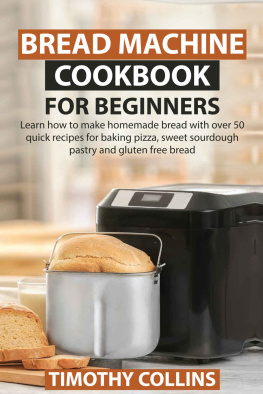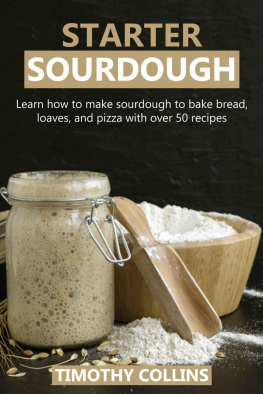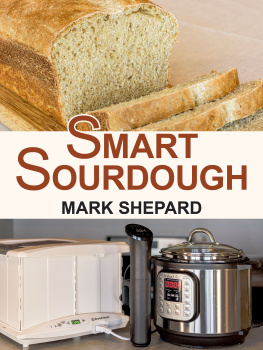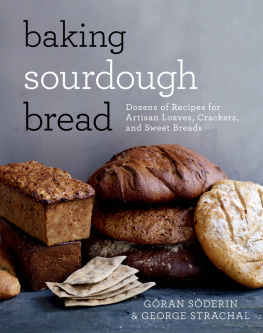
2020 Quarto Publishing Group USA Inc.
Text 2020 Paul Barker
First Published in 2020 by Quarry Books, an imprint of The Quarto Group,
100 Cummings Center, Suite 265-D, Beverly, MA 01915, USA.
T (978) 282-9590 F (978) 283-2742 QuartoKnows.com
All rights reserved. No part of this book may be reproduced in any form without written permission of the copyright owners. All images in this book have been reproduced with the knowledge and prior consent of the artists concerned, and no responsibility is accepted by producer, publisher, or printer for any infringement of copyright or otherwise, arising from the contents of this publication. Every effort has been made to ensure that credits accurately comply with information supplied. We apologize for any inaccuracies that may have occurred and will resolve inaccurate or missing information in a subsequent reprinting of the book.
Quarry Books titles are also available at diskount for retail, wholesale, promotional, and bulk purchase. For details, contact the Special Sales Manager by email at or by mail at The Quarto Group, Attn: Special Sales Manager, 100 Cummings Center, Suite 265-D, Beverly, MA 01915, USA.
10 9 8 7 6 5 4 3 2 1
ISBN: 978-1-63159-913-2
Digital edition published in 2020
eISBN: 978-1-63159-914-9
Library of Congress Cataloging-in-Publication Data
Names: Barker, Paul, author.
Title: Naturally fermented bread : how to use botanical starters cultivated from fruits, flowers, plants, and
vegetables to bake wholesome loaves, buns, and pastries / Paul Barker.
Description: Beverly, MA : Quarry Books, an imprint of The Quarto Group, 2020. | Includes index.
Identifiers: LCCN 2020017144 | ISBN 9781631599149 | ISBN 9781631599149 (eISBN)
Subjects: LCSH: Bread. | Baking. | Fermentation. | LCGFT: Cookbooks.
Classification: LCC TX769 .B188 2020 | DDC 641.81/5--dc23
LC record available at https://lccn.loc.gov/2020017144
Design: Burge Agency
Cover Image: Joanna Good
Photography: Joanna Good
Disclaimer: Some plants and flowers can be poisonous and should not be ingested. Always check with a trustworthy source before using any vegetation for fermenting.
INTRODUCTION
YOUR BOTANICAL BAKING JOURNEY BEGINS HERE
You are about to embark on the most fascinating voyage of diskovery to bake breads and sweet buns botanically. Starting today, you will never have to buy yeast ever again. Instead you can just go into your garden, pick some fruit, vegetables, plants, or flowers, place them in a jar of water, and leave them in your kitchen to ferment. When the water in the jar starts to fizz, youll then use this liquid to make your bread rise! Once this simple method is mastered, youll be making stunning breads from just flour, salt, and fermented water. Theres no need to worry if youre not much of a gardener, though; store-bought produce works just as well.
This method, which I call botanical baking (also commonly known as yeast waters), is a growing technique for baking breads. Its a natural progression from fermenting your own foods to preserve them, which continues to increase in popularity. These fermented foods are more wholesome and contain no unnecessary ingredients or preservatives. They also provide probiotic bacteria that aid digestion and increase the bioavailability of vitamins and minerals for your body to absorb, leading to healthier gut, bones, and immune system. Baking bread the botanical way will enable you to make more wholesome, nutritious, and digestible loaves. You may already be preserving your own foods at home, or perhaps you are a novice fermenter just starting out. Either way, you are about to join a clandestine group of global home bakers championing this method of baking.
As a lifelong baker who likes to push the boundaries in my craft, I have found that botanical baking is my favorite way to bake. In 2018, my botanical breads were awarded the Most Innovative Bakery Product in the United Kingdom at the national Baking Industry Awards. This was a superb endorsement for my new concept, and, personally, a wonderful accolade presented to me by my peers in British baking.
This book is a collection of my personal favorite botanical recipes, which have been developed at my bakery and training school, Cinnamon Square. The recipes all follow my measured approach philosophy of baking, prescribing accurate measurement of weight, temperature, and time. This helps ensure consistent quality and helps you become a more confident and knowledgeable home baker. Dont worry if you are a novice bread maker, as I am confident you will soon get the hang of botanical baking.
I hope my book inspires you to adopt this botanical approach to baking. Do share your experiences on social media and together we can champion the rise of botanical baking worldwide.
BOTANICAL BAKING
What is botanical baking? It is the method of harnessing wild yeast and bacteria abundant in fruits, vegetables, plants, and flowers to naturally leaven wholesome breads and sweet buns and further create subtle flavors and aromas.
CHAPTER 1
BAKING BOTANICALLY
Id like to explain baking botanically to you by first setting the scene as to where this fits in within the three existing methods of baking by using fermentation to leaven, followed by some information on fermentation itself, and finally detailing the actual botanical fermentation process. The three main categories for making yeast-raised products are bulk fermentation, prefermentation, and sourdough. I classify baking botanically as a fourth category.
AN OVERVIEW OF THE FOUR KEY BREADMAKING METHODS
BULK FERMENTATION
I define bulk fermentation as the entry level of breadmaking. Most standard baking recipes use this method, and it is the method employed within a bread machine. After a dough is formed, it is left for a period to mature. This stage is called bulk fermentation, although in many recipes, it is often referred to as the first proof or first rise. Fresh or dried yeast is used to raise the dough, and the resulting baked bread is generally completed within three to four hours. However, this process is not long enough to generate any significant natural fermentation flavor or aroma in the baked bread. In this book, bulk fermentation refers to the initial rise after the dough has been thoroughly mixed and set aside for a recommended period of time.
PREFERMENTATION
Once you are comfortable making bread at home using the bulk fermentation method, you can begin using the prefermentation method to step up the quality. This method requires an additional dough or batter (preferment) to be added to the recipe (e.g., flour, salt, yeast, and water) before mixing the required dough or batter. This preferment is prepared up to 24 hours prior to its inclusion within the final dough. During this time, it generates a strong fermentation flavor and aroma, and, when added as an ingredient within a fresh dough, it imparts these qualities to the finished baked bread.











